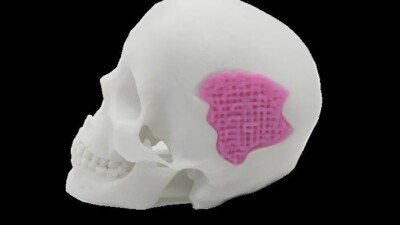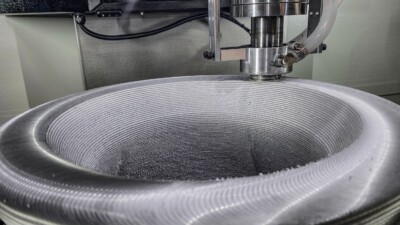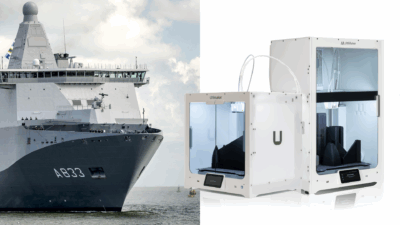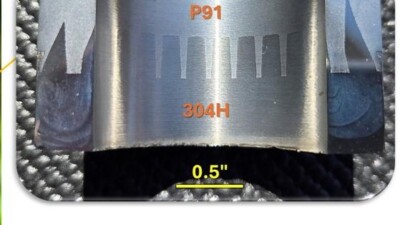ETH Zurich students develop rotating laser powder bed fusion machine for additive manufacturing of rocket nozzles.
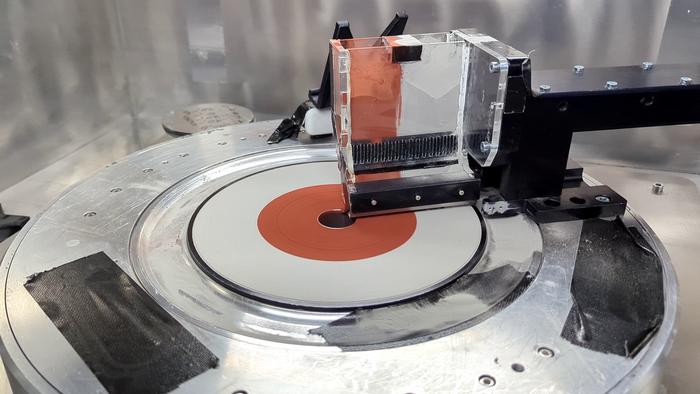
Among the myriad aerospace applications of additive manufacturing, rocket nozzles are perhaps the most exciting, combining the unique benefits of 3D printing – lightweighting, complex geometries, conformal cooling, and multi-material builds – in a single part. And yet, while the versatility of additive technologies tends to be one of its main selling points, a new development with particular geometric constraints could help further its innovation.
A group of six Bachelor’s students at ETH Zurich have developed a variation on the laser powder bed fusion (L-PBF) process that takes specific aim at improving the production of cylindrical parts, including rocket nozzles and turbomachinery components. Their design came about as part of a project to develop bi-liquid-fuelled rocket nozzles for ARIS, the Swiss Academic Space Initiative.
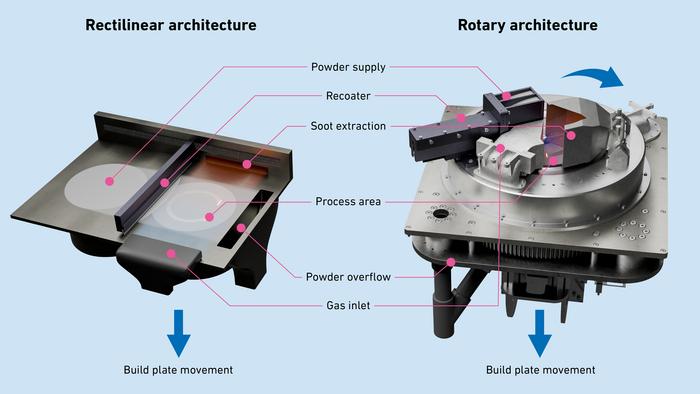
In just nine months, the student team designed, built, and tested a new L-PBF machine that incorporates a rotating platform, a departure from the standard rectilinear design used by commercial L-PBF machines. The advantage of this design is that the machine can operate continuously, rather than pausing to recoat the powder bed after each layer is melted.
“This process is ideally suited to rocket nozzles, rotating engines and many other components in the aerospace industry,” said Michael Tucker, a senior scientist at ETH Zurich who lead the project, in a press release. “They typically have a large diameter but very thin walls.” While the machine can still produce non-axisymmetric parts, as well as arrays of parts, it’s particularly effective for cylindrical geometries.
Moreover, the researchers also claim that their rotating machine can process two different metals in a single operation using significantly less metal powder compared to conventional multi-material setups. The rotating architecture also reportedly improves inert gas flow. “At first we underestimated the extent to which the gas flow mechanism affects product quality,” said Tucker. “Now we know it’s crucial.”
Tucker and his team faced several challenges during the project, including synchronizing the scanning laser with the rotation of the gas inlet and powder supply. They also had to design and build several of the machine’s components themselves, including a rotatable connection for the gas inlet and a system for automatically refilling the powder during operation. ETH has already filed a patent for the rotary multi-material L-PBF technology.
Despite its potential, the machine still has some crucial limitations, particularly in the build volume: thus far, components manufactured with the prototype machine have been limited to a maximum of 20 centimeters in diameter. As such, the students are currently working on scaling the process in terms of both speed and size, with the hope of finding industry partners to help them further develop the machine.
Their research is published in CIRP Annals.
